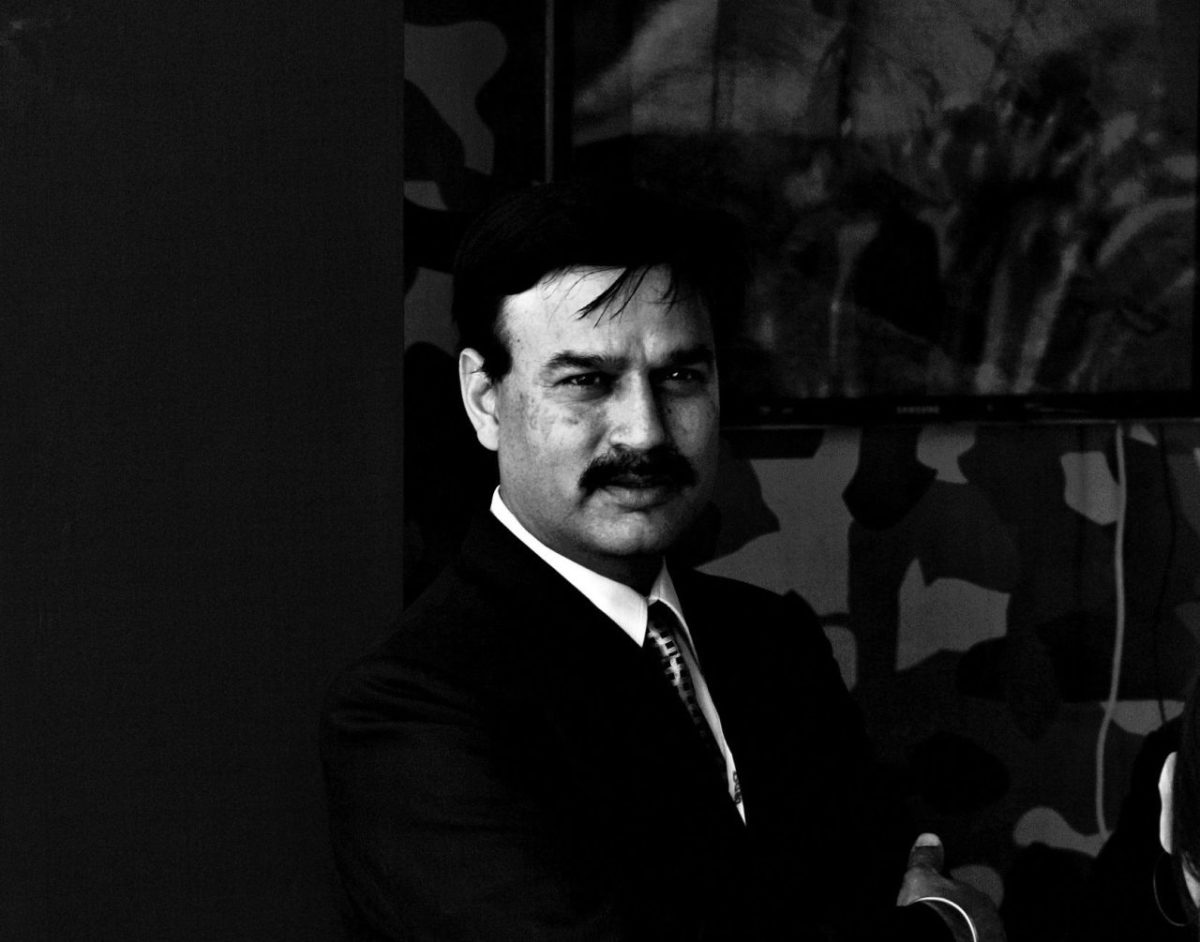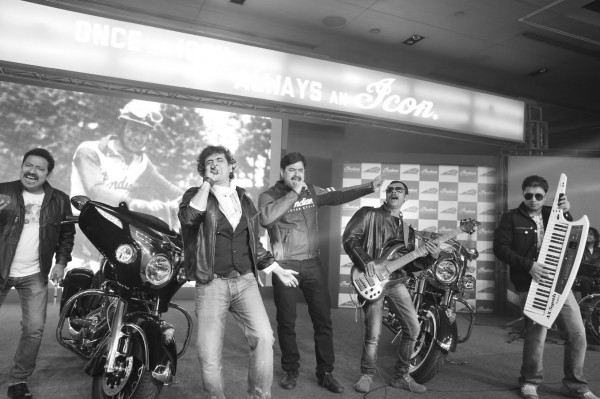What volumes are you looking at for the entire range of Indian Motorcycles in India?
Well, the segment where these motorcycles are positioned, that is the 25 lakh and above market has a cumulative volume of 200 to 250 units a year. For the first year, we are looking at capturing about 10% of that market, and sell 20-25 motorcycles.
What other plans does Polaris have for its Indian operations?
We will weigh our options seriously, and let me assure you that Polaris is not in India only to market expensive off-roaders and motorcycles. We sure have a plan, and our team is working on products which are more relevant to this market. We will see when it’s the right time to introduce some new products, and will surely inform you about them at the opportune time.
Do you have a R&D facility in India? Are you collaborating with any outside agencies for research or technology related support in the Indian market?
All our current products are coming from outside, so we don’t have an R&D base here. We do have product managers who analyze the Indian market and send suggestions to tweak the products accordingly. We have a technical tie up with Larsen & Toubro, where some of their engineers are working from their office helping us on certain technical issues. But beyond that, we don’t have a dedicated R&D center here in India as of now.
Where do you see Polaris in India 5 years from now?
By 2020 we will be strongly entrenched in the Indian off-road vehicle market and attain the No.1 spot in true sense. Since we are the only players right now, we are No.1 anyway. But with No.1 status, I mean that I would want all my competitors to be present here in this market and still be No.1 by a good margin. Moreover, I think the size of the company in India, in every sense will grow manifold.
Do you think that the duty structure or legislation can be changed to promote your brand?
On levying duties to protect the domestic industry, I am with the government. Being an Indian, I understand that it’s important to protect the interest of the local manufacturers. But levying duties to protect an industry which does not exist is not right. So while there are no off-road manufacturers in India, the duty is still equal to cars – this doesn’t make sense.
Also, if you look at it, the more than 100% duty hits the government only in the end. We are selling a good chunk of our vehicles to government, and with a lower price tag, the biggest benefiter would be government agencies. These products are not only for leisure, or show, but they are highly specialized products meant to deal with extreme conditions. Using these products in certain situations is not a luxury, but a necessity for our armed forces. The duty levied on our products makes them more inaccessible to them.
Do you provide any armored vehicles also?
No we don’t provide any armored vehicles. But there are many companies worldwide who do armoring around Polaris vehicles. So that’s a possibility in India too.
Let’s talk about your Hero Honda days. What do you think made Hero the force that it is today?
I think that the owners of the company, the Munjals have a very deep business sense. They have a great understanding of the market. You see, there are a lot of intricacies involved with a market like India. It’s a big market and everyone wants to be here, but it’s very complex. Even after being born and brought up in India, we cannot say that we know the country hundred percent. So to understand, analyze and device a strategy for a market as diversified and complex as India is a master’s art. And I respect the Munjals for having that understanding and canniness in abundance.
Look at the immensely successful Splendor. Now I was not there when the product was first conceived and executed, but I know the people who were a part of that team. From what I heard, it was amazing how the product was finalized. Inputs from every possible source were incorporated in that bike. Apart from market research, the company went great lengths to take suggestions and feedback from the end customer. People were called from within the company, the dealers were called and their feedback was duly taken, and more importantly implemented.
Now, as a product, the Splendor may have been rejected by some in the presentation phase, but that’s the thing. You have to understand the customer. You may want to make the best looking, most feature rich product, but sometimes that is not required. It’s about understanding your customers and prioritizing the deliverables based on his needs and wants. You are here not to buy, but to sell. And the Munjals understand that better than most other people.
You then moved on to Yamaha, which is a Japanese company, and like other Japanese companies, is known to be very assertive and firm about its products and technology. How difficult was it for you as a manager in India to make them understand the difference in the market, and effect certain changes in certain products?
When I was with Yamaha they were in a different plane. From a once dominant status, where they had a 45 percent market share in motorcycles, they had come down to a mere 1.5 %. And at that time they didn’t know what to do. The Managing Director we had at that time was a very dynamic guy though. And along with me and other team members, we worked hard on some models which made Yamaha successful again. Fortunately these products were launched when I was a key member of the team. Based on my learnings from the Munjals at Hero and Mr. Singhania at LML, I did what I believed was best for Yamaha. The R15, the FZ – these products really changed the game for Yamaha once again
Now, coming to the communication part, every management wants to know how to be successful. But we also have to understand their way of working. If you want to suggest a change randomly, it’s difficult for them to accept it on face value because they are leaders in motorcycle market worldwide and understand their craft pretty well. Secondly, even a single change requires thousands of other things to change. It’s important to communicate things properly. That’s the art. One should not lose sight, and understand what is required by the market, and what can be omitted, and then communicate things in a humble and positive manner. If your suggestion has merit, and if it is communicated properly, it surely will be listened to.
You suggest good things, you bring about results, and you would be listened to even more. Confrontations need to be avoided at every level.
Talking of products, would you say that Indian auto companies make more compromises as compared to their international counterparts?
Yes, I would agree with you on that. See, in life also, there is a time period which is required for the birth of a baby, nine months to be exact. Premature babies are going to be unhealthy and weak.
In auto market also, as a rule of thumb, you need about 30 to 36 months for developing a new product. You can bring the baby’s birth down from 9 to probably 8 or 8 and a half month, but not to 6, or you’ll pay. And most of the times, this is a mistake that the Indian companies are committing. You should have a plan, and you should stick to these basic rules. We have great engineers in the country. In Polaris also we have many people from India worldwide. Indian people have the talent, but the management has to give them the time. They plan in a hurry, and the plan itself is sometimes flawed.
What do you think about the component industry in India? Are components which are pre-specified good enough, or are even they compromised?
Well, components made in India are not second-rate at all! Today we are manufacturing and exporting to the whole world. We have a sourcing base here in India, and there are no problems. There need to be quality checks, and its fine then. The who’s who of the international car and bike industry are here and they are manufacturing here. The component manufacturing factories have improved and they are right there with the best in the world.
What was your takeaway from LML as a company? Freedom was a great product, what went wrong? I was particularly intrigued by their strategy to launch the bike in scores of colors
Well the downfall was because of a mix of a lot of things. But the primary reason was that the breakeven points of this industry are very high. At one point we were doing 25,000 units a month with the Freedom. The product was such a great success, that even the Munjals scrutinized it to understand what worked for it. The investment was high, but the return even after being so successful was not so high. And the company did not have deep enough pockets.
It was a great experience for me to learn what to do and what not to do. I learnt to scale business in tune with the investment at hand and not going overboard. I learnt a lot from Mr. Singhania. He is a great person and has a very deep understanding of the industry.
About the colors of Freedom, I was a part of the team that developed the Freedom, and when the decision was taken to launch the bike in 9 colors I strongly opposed it. Their argument was that if the colour of every individual’s shirt is different – why not give them the liberty to choose a unique color for their bike? Great thought! But the implementation is very different, and difficult. The case became very complicated at the dealership level – the logistics, the supply chain, customer satisfaction… this became an issue. For example, the dealer would have 6 colors, and I as a customer would still want a different option, so the dealer would want to persuade me to buy a specific color which I did not want, which led to dissatisfaction.
What are the interests and hobbies you indulge in when you get time off you rigorous work schedule?
Singing and astrology are two of my biggest hobbies. I sang the ‘Yes! Yamaha’ anthem alongside Sunidhi Chauhan. We also got Dr. Palash Sen to create a song for Indian Motorcycles – “Go Indian Go”, and I lent my voice to the song. I sang on a television show, and participated as a contestant three years back on E24 channel, I won the third prize.
Astrology is another hobby, and I believe in it. Having read two very interesting books on the subject, I consider it as a science. Whenever someone is in deep trouble, I want to go ahead and help him as a person and as an astrologist. It also helps me a lot, as I am more aware about the most opportune time to do something.


